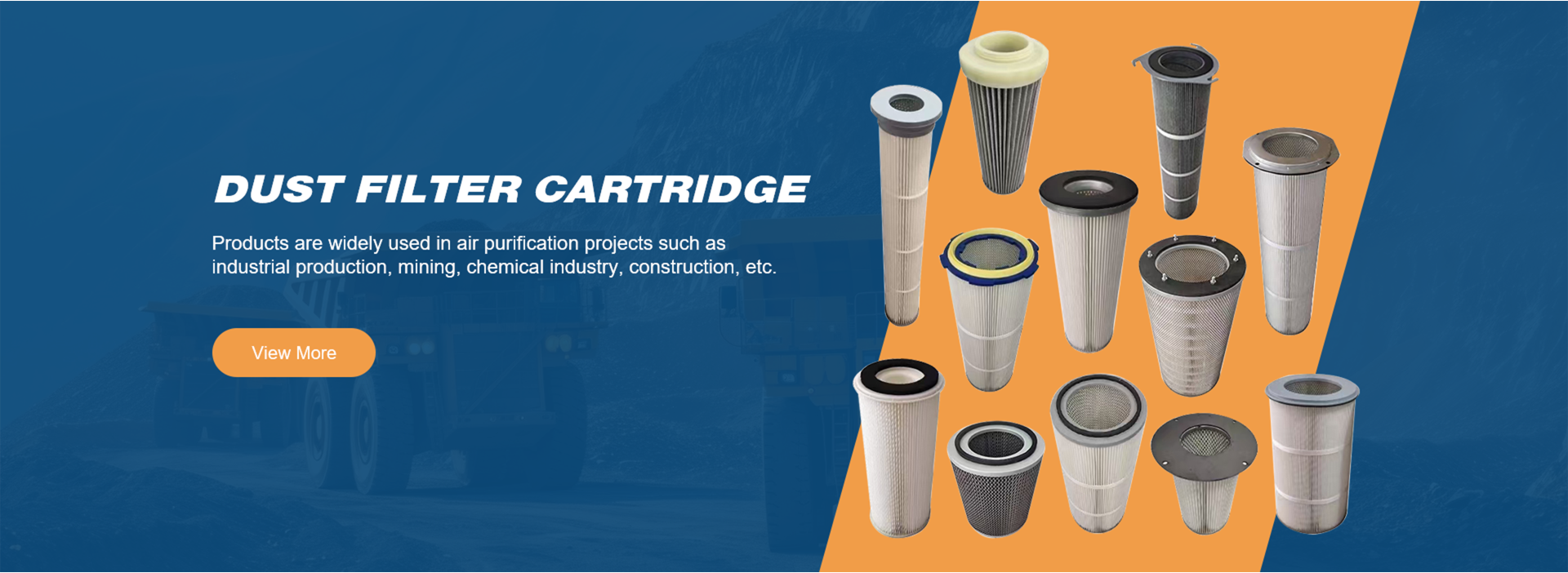 Tel:
+8615930870079
Tel:
+8615930870079
dec . 10, 2024 01:26 Back to list
Efficient Filter Cartridge Solutions for Dust Collection Systems and Air Quality Control
Understanding Filter Cartridges in Dust Collectors
Dust collectors are essential equipment in various industrial processes, primarily designed to enhance air quality and ensure worker safety by capturing airborne particles. Among the critical components of a dust collector system is the filter cartridge. This article explores the functionality, benefits, and maintenance of filter cartridges in dust collectors.
What is a Filter Cartridge?
A filter cartridge is a cylindrical component designed to filter out dust and particles from the air stream in dust collection systems. These cartridges are constructed from various materials, including polyester, polypropylene, and other synthetic fibers tailored for specific applications. Depending on the design, filter cartridges can be either pleated or non-pleated. Pleated cartridges provide a larger surface area, enhancing filtration efficiency and increasing the duration between maintenance cycles.
The Importance of Filter Cartridges
The primary function of filter cartridges is to improve air quality by removing harmful dust and particulate matter from the air. In industries like woodworking, metalworking, pharmaceuticals, and food processing, the presence of dust can pose health risks and contribute to hazardous working environments. By using a high-quality filter cartridge, businesses can comply with environmental regulations, reduce the risk of respiratory diseases among workers, and promote overall workplace safety.
Moreover, filter cartridges help maintain equipment efficiency. When dust accumulates on machinery and other surfaces, it can lead to premature wear, increased energy consumption, and higher maintenance costs. By keeping the air clean and preventing dust accumulation, filter cartridges contribute to the overall longevity and efficiency of industrial processes.
Types of Filter Cartridges
There are several types of filter cartridges available, each designed for specific applications
1. Pleaed Cartridge Filters These filters are ideal for applications with fine dust. The pleated design increases surface area, promoting greater dust holding capacity and efficiency.
2. High-Efficiency Particulate Air (HEPA) Filters HEPA filters capture at least 99.97% of particles that are 0.3 microns or larger. They are often used in industries requiring high levels of cleanliness, such as pharmaceuticals and semiconductor manufacturing.
filter cartridge dust collector

3. Activated Carbon Filters These filters are specifically designed to remove volatile organic compounds (VOCs) and odors from the air. They are commonly used in applications dealing with chemicals or any particle that may release harmful fumes.
4. Dust-Collection Cartridges Specifically tailored to trap larger dust particulates, these cartridges are typically used in manufacturing processes that generate sizable dust particles, such as woodworking.
Maintenance of Filter Cartridges
Regular maintenance of filter cartridges is vital to ensure their effectiveness and durability. Here are some key aspects of maintaining filter cartridges
1. Inspection It is crucial to inspect filter cartridges regularly for signs of wear, damage, or clogging. Regular visual checks help identify the need for replacement before performance declines.
2. Cleaning Some cartridges are designed to be cleaned and reused. Utilize compressed air to blow dust out of the pleats, but be cautious to follow the manufacturer's recommendations, as improper cleaning can damage the filter.
3. Replacement Depending on the operating conditions and dust load, replace cartridges according to the manufacturer's guidelines. Ignoring timely replacements can cause airflow restrictions and system inefficiencies.
4. Performance Monitoring Keep track of the dust collector's performance through monitoring systems. An increase in pressure drop across the filter indicates that accumulation is occurring, necessitating immediate attention.
Conclusion
Filter cartridges play a vital role in the efficient functioning of dust collectors, ensuring clean air in industrial settings while safeguarding the health of workers. By investing in high-quality filters and adhering to a regular maintenance routine, businesses can optimize their dust collection systems, reduce operating costs, and create a safer work environment. Understanding the different types of filter cartridges and their applications enables organizations to make informed choices, ultimately improving workplace productivity and health standards.
-
Types and Applications of Air Filtration CartridgesNewsJul.28,2025
-
The Role of Gas Turbine FiltersNewsJul.28,2025
-
Mastering Air Filter Cartridge UseNewsJul.28,2025
-
Advanced Turbine Filters for Modern Gas TurbinesNewsJul.28,2025
-
Cellulose Air Filter Cartridge Advantages in Dust FiltrationNewsJul.28,2025
-
Cellulose Filters for Air Particle ReductionNewsJul.28,2025

 Email:
Email:





